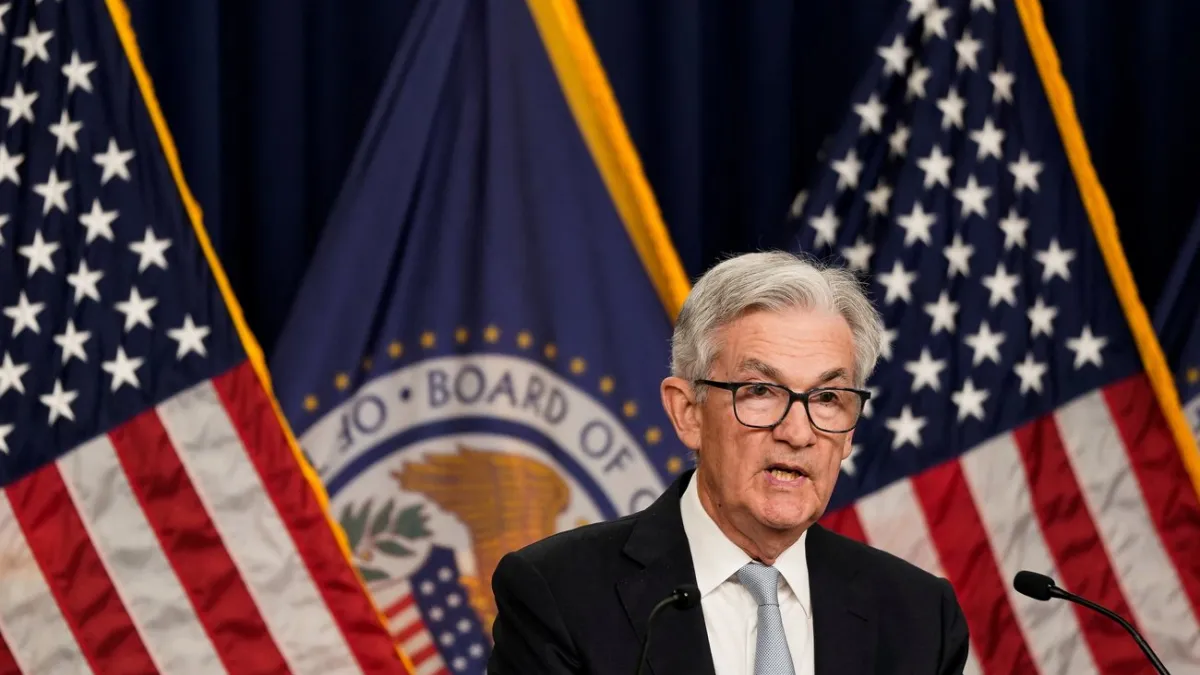
The Federal Reserve cut its benchmark interest rate by 25 basis points on Wednesday amid concerns about the strength of the labor market, while bank officials sent mixed signals about making additional cuts later this year.
At the conclusion of a two-day meeting, the Federal Open Market Committee said it has reduced the interbank lending rate to a range between 4.0% and 4.25%. It was the first rate cut since December 2024.
In a statement providing a summary of its views, the FOMC said the U.S. economy continues to expand at a “solid pace,” but job growth has slowed and inflation remains moderately above the Fed’s 2% target rate.
In a press conference, Fed Chair Jerome Powell made it clear that officials are concerned about the labor market, even as unemployment remains low by historical standards. “Downside risks to employment appear to have risen,” he said.
Earlier this year, Fed officials were more concerned about the risk of inflation as they monitored the effects of tariffs imposed by President Donald Trump. Powell said the risks to employment and inflation have moved closer to balance, warranting a shift in rate policy toward a neutral rather slightly restrictive stance. Powell characterized the rate cut as an exercise in “risk management.”
Powell also signaled that the outlook is uncertain. “There are no risk-free paths now,” he said. “It’s not incredibly obvious what to do.”
All but one of the 12 members of the FOMC voted to cut rates by a quarter point. The lone dissenter was Stephen Miran, the White House economist who was just confirmed to fill a vacant seat on the Fed board. Miran wanted a larger cut of 50 basis points, echoing Trump’s repeated calls for sharply lower interest rates. Powell noted that there was not “very much support” for a larger cut among Fed officials.
Plotting the future: Economic projections released Wednesday show that Fed officials have different views on how they expect the central bank to proceed in the coming months. Ten of the 19 policymakers indicated that they expect to see two or more rate cuts by the end of the year, while seven estimated that there would be no more cuts in 2025 and two said they expect to see just one more.
Inflation is expected to remain above target, with the median projection for inflation coming in at 3.0% for 2025 and 2.6% for 2026. Inflation is not projected to return to the Fed’s 2.0% target until 2028.
Economic growth will continue to putter along, Fed officials predicted, with growth remaining below 2.0% over the next four years. Unemployment is projected to rise modestly to 4.5% this year, moving gradually down to 4.2% by 2028.
What the experts are saying: Analysts said the Fed’s latest policy move confirms that the economy is in a period of marked uncertainty, potentially pushing the central bank in opposite directions and providing reasons for caution. Powell noted that inflation has moved higher, and the threat of further price pressure remains in place as Trump’s tariffs work their way through the economy. At the same time, job growth has weakened, and Fed officials expect unemployment to rise by the end of the year.
Heather Long, chief economist at Navy Federal Credit Union, said on social media that the Fed’s projections indicate that both inflation and unemployment will rise in the coming months – a combination she called “stagflation-lite.”
Olu Sonola, head of U.S. economic research at Fitch Ratings, said the takeaway is that the Fed will continue to cut rates to support the labor market. “The message is clear,” he said, per Bloomberg, “growth and employment are the priority, even if that means tolerating higher inflation in the near term.”